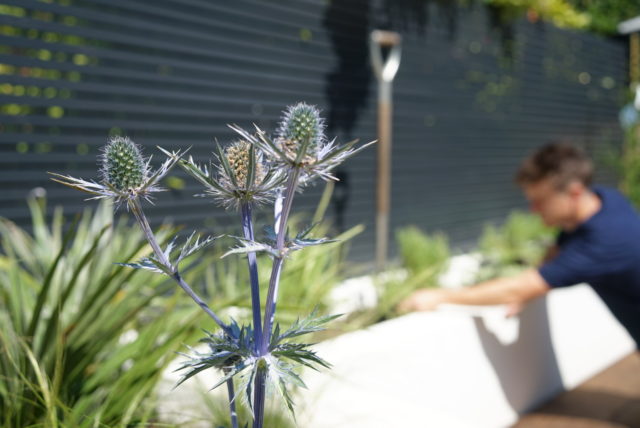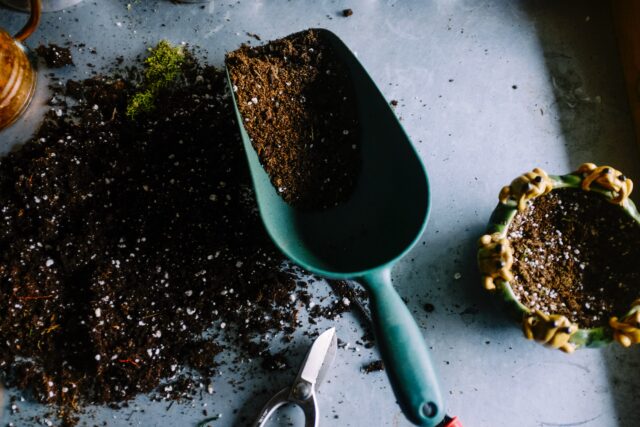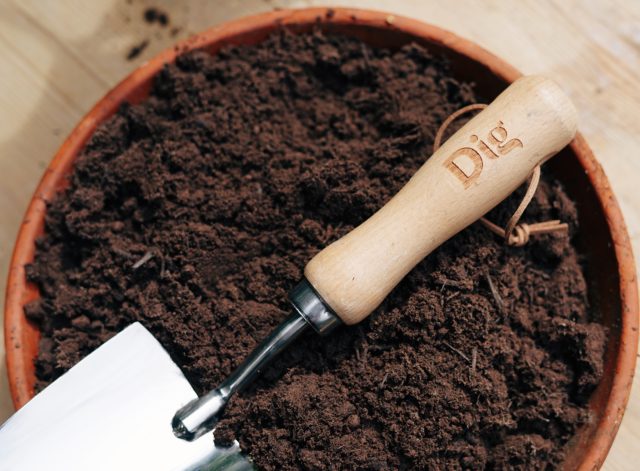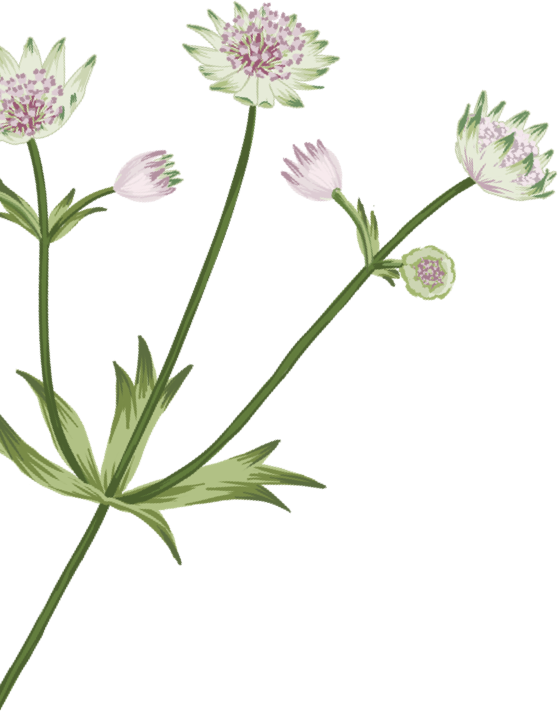Planting less densely can make a statement
Sparser planting, especially when paired with gravel mulch, pebbles or stones, can have a surprisingly big impact. This is not only cost effective, but also creates more habitat and cover for insects. This approach would also brilliantly complement our Med theme’s planting structure and colour palette.

The Addleshaw Goddard Freedom To Flourish Garden by Carey Garden Design Studio

Embrace tall, embrace texture
Some gardens this year really leaned into tall, textural perennials (such as Monty Don’s, Ryan McMahon and Jo Thompson’s). Fennel, Poppies and Linaria and a variety of Umbellifers as below, were used to great effect to create a immersive, wild designs. With their shaggy, natural looks, I can see these additions working perfectly with our Cottage theme.
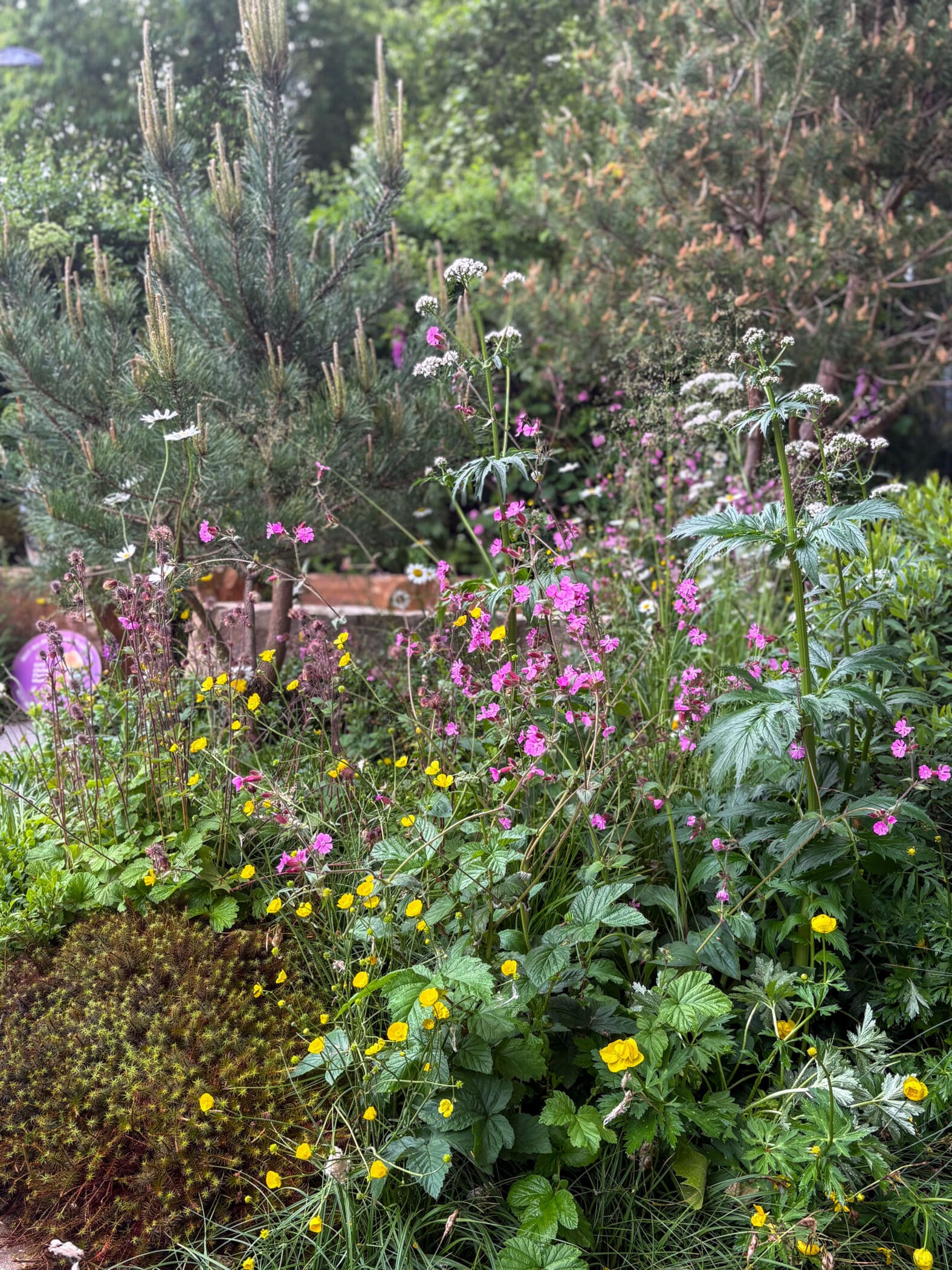
Seawilding by Ryan McMahon
Be bould
The use of boulders to create structure as well as a more naturalised design was something I particularly enjoyed. As an added bonus, these can also double as seating or water features.
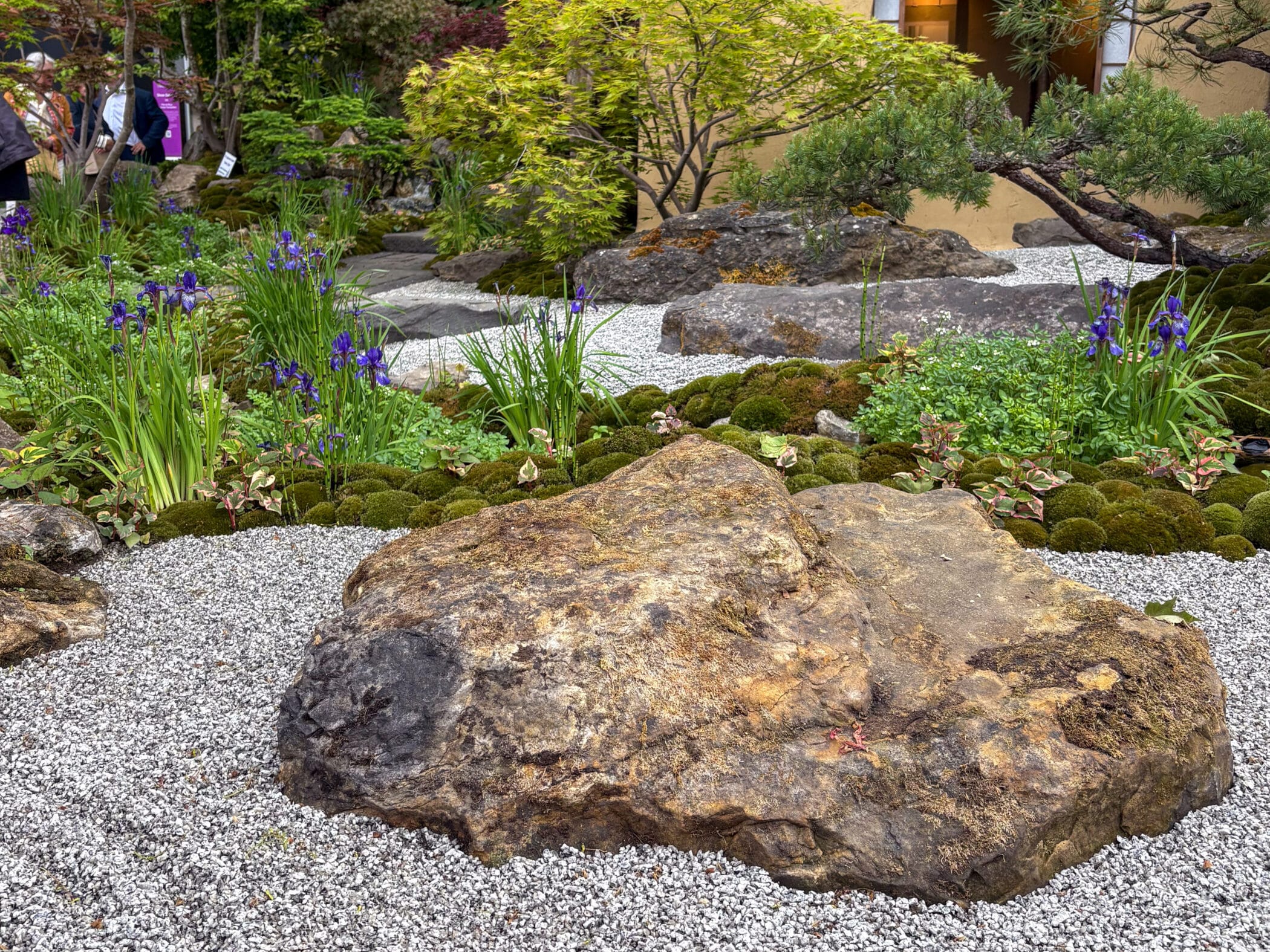
Cha No Niwa Japanese Tea Garden by Kazuyuki Ishihara
Set some boundaries
Using boundaries to make a statement and to create a backdrop for planting was used to great effect. Earth tones were this year’s primary take away and boundary walls in these colours can be used either in harmony (such as with yellow, apricot and white flowering perennials) or a contrast (such as with darker blues and reds).
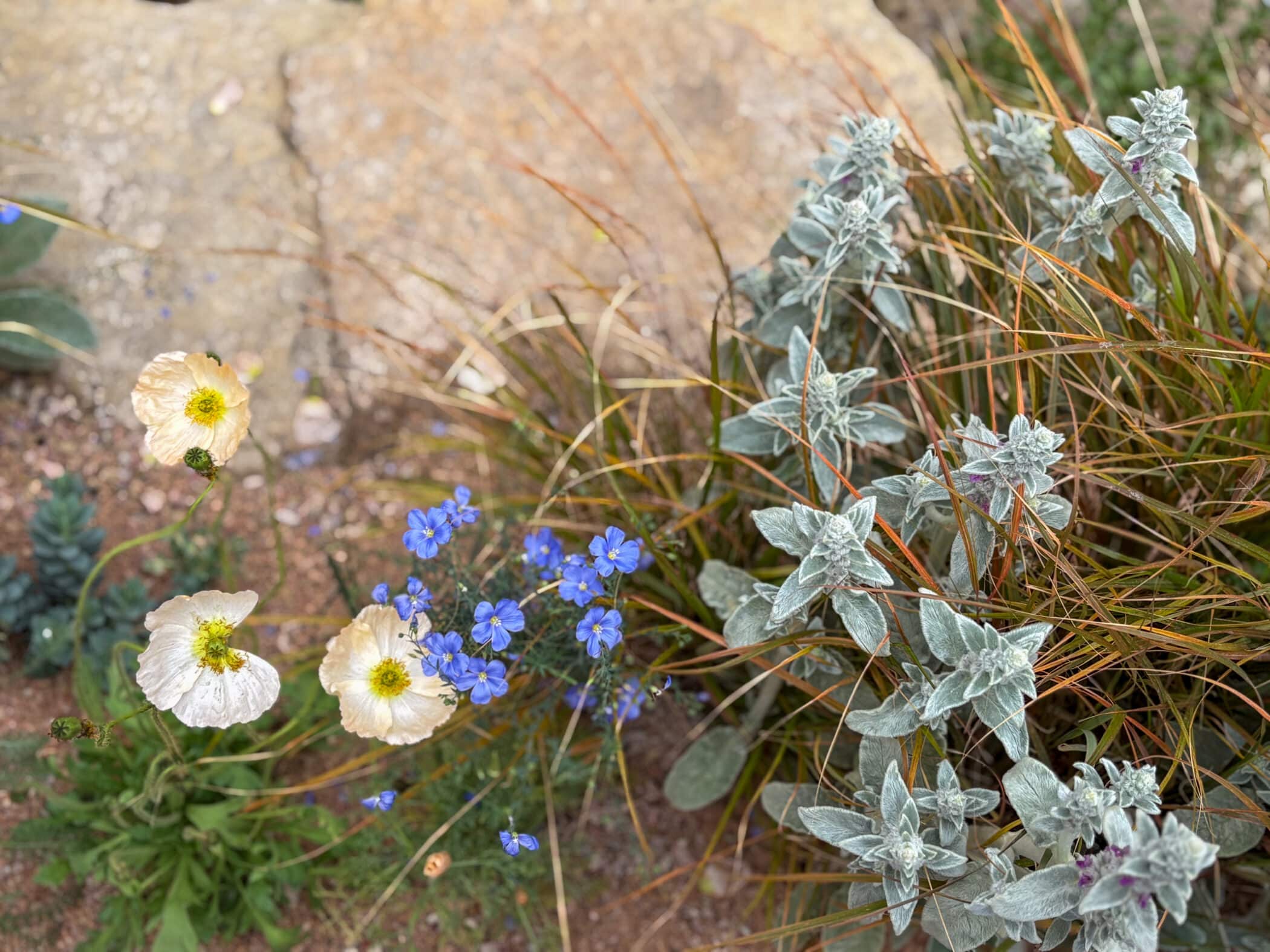
Killik & Co ‘Save for a Rainy Day Garden’ by Baz Grainger
Pining after pines
Pine trees were very popular this year too. Pines have amazing structure, are evergreen, and there are so many varieties to choose from. They are an easy way of adding some year-round interest and are low maintenance – a brilliant trend that, with our Med theme, we’re keen to promote! If you’re short on space then Pinus ‘Mops’ or ‘Mugo’ are a great way to bring in this aesthetic without needing a lot of space.
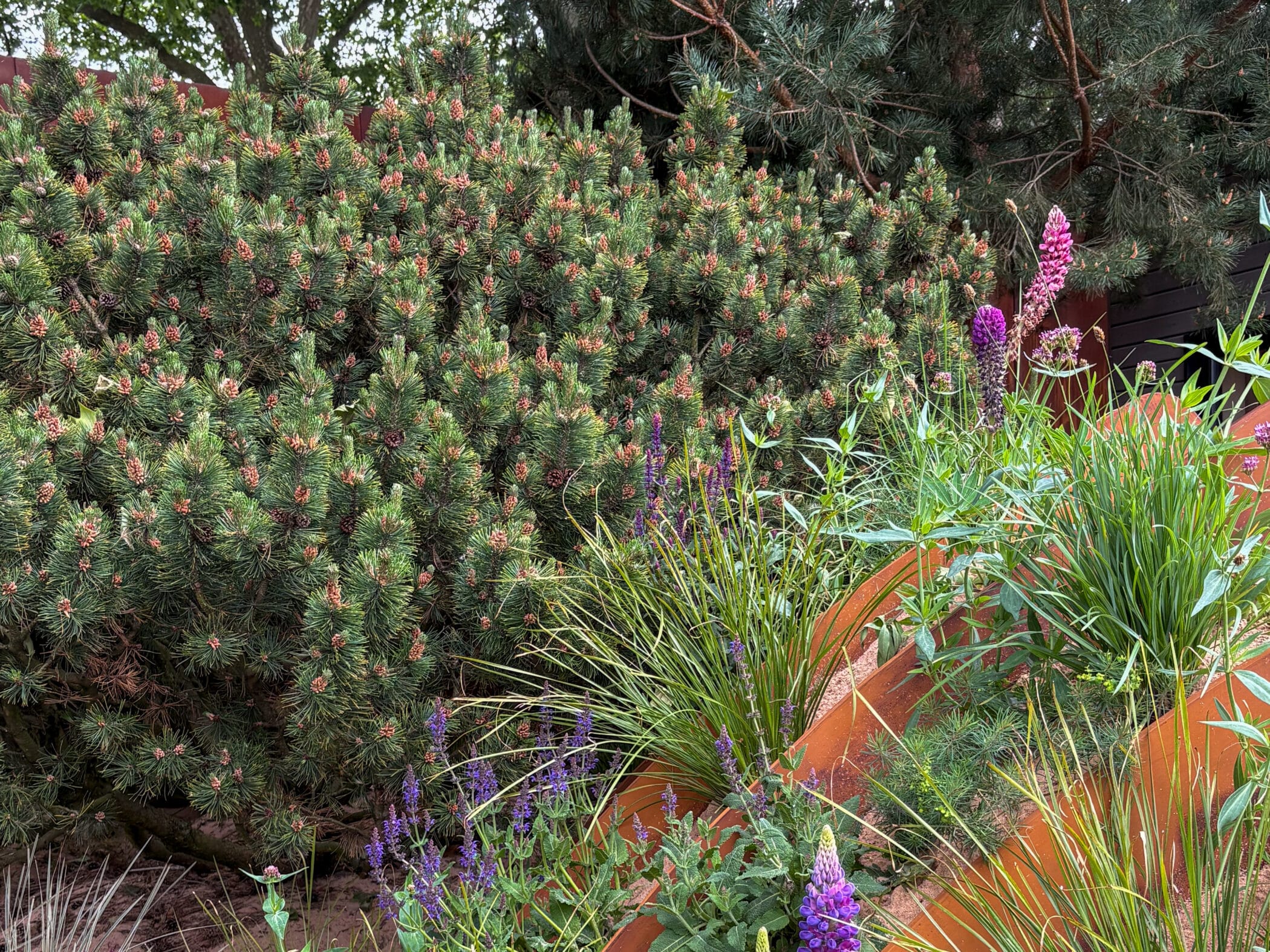
The Hospitalfield Arts Garden by Nigel Dunnett
Calm planting palettes
I noticed lots of planting palettes of calming tones that were not contrasting, but instead were within the same colour band – gardens packed with varieties of yellows, apricots, purples etc. really stood out and were a reminder that although variety is something we love and champion at Dig in our Instant Beds, there can sometimes be real impact through singular colour focus and boldness of vision.
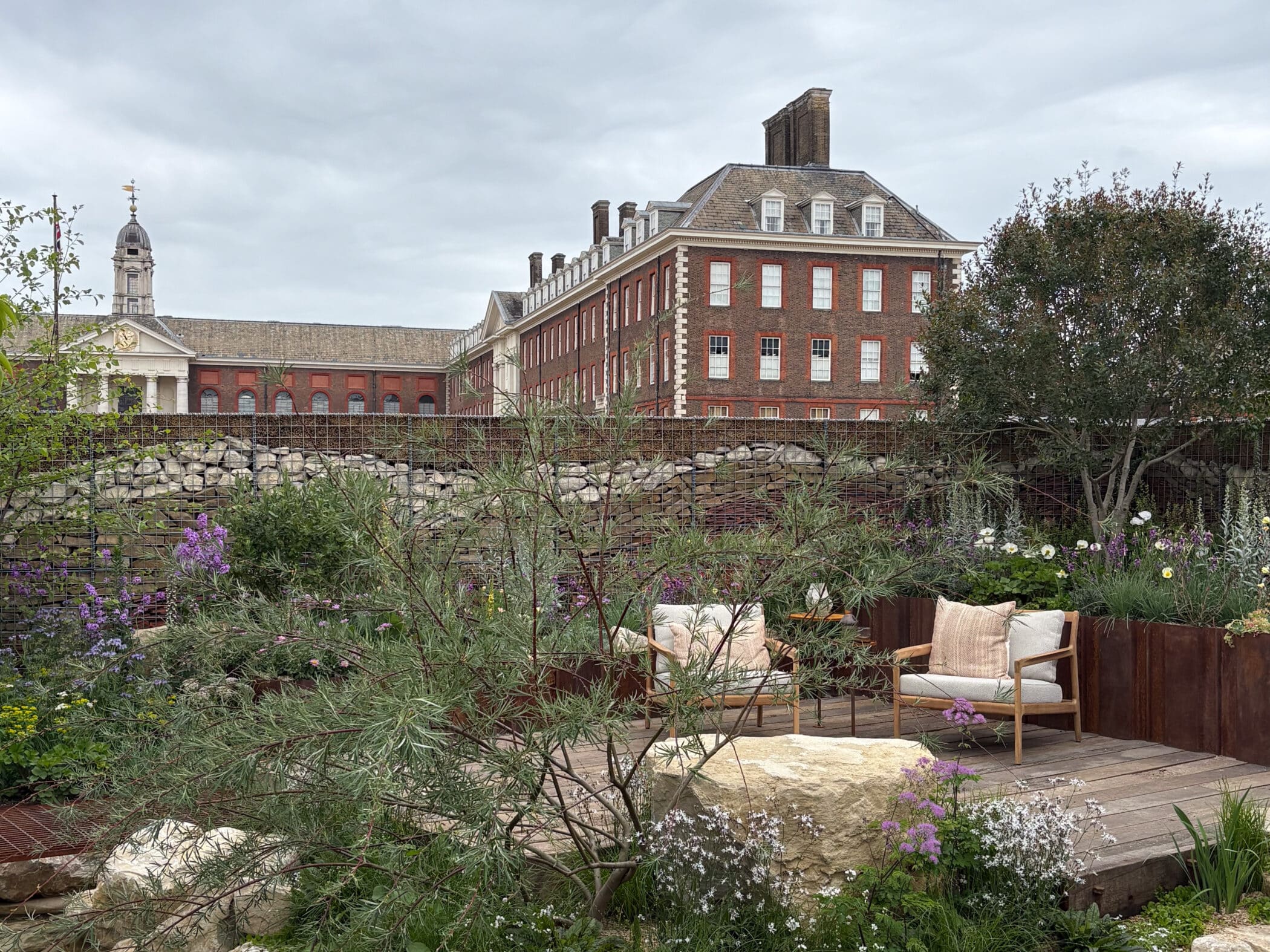
The Addleshaw Goddard Freedom To Flourish Garden by Carey Garden Design Studio
Championing leaves
Non-flowering plants such as ferns and grasses were used with aplomb to create lovely lush backdrops at so many different points throughout this year’s show. As big fans of structure and visual interest from sources other than flowers, we’re in full support of this trend. This approach is also often very popular with gardeners looking for a more low-maintenance approach.
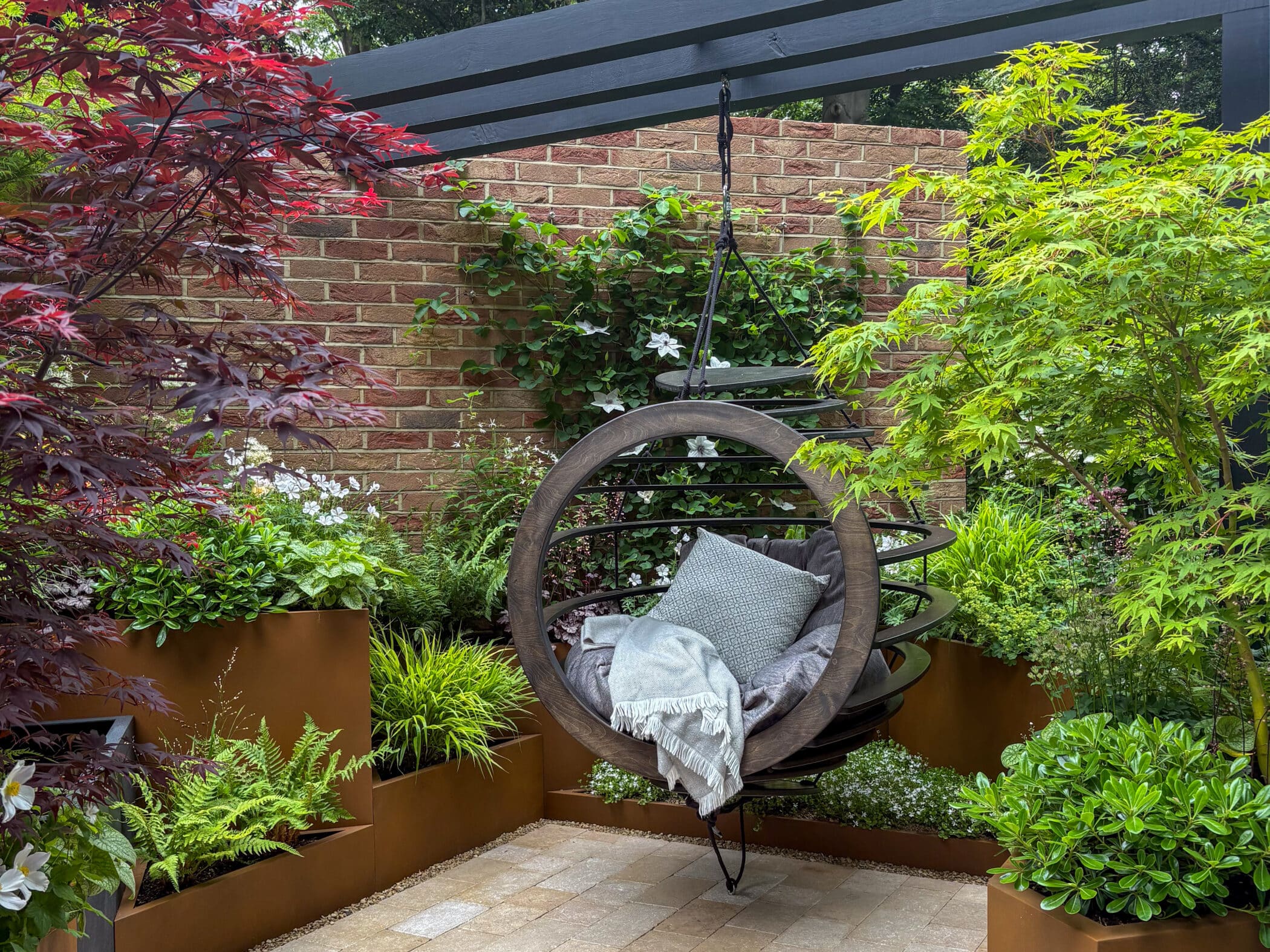
Room to Breathe Hospital Garden for the TSA by Jen Donnelly and Catherine Gibbon
Going, going, gone
I noticed that perennials that had “gone over” (a gardening term used to describe when a plant’s flowers are past their peak) were also included in many schemes. The flowerheads of Geums, Echinacea and Asters etc. are all used in valuable ways within schemes – to add another layer both texturally, and structurally. When thinking about implementing this approach at home, it’s simply a case of remembering that if you like how it looks, and it works well with your other plants, it’s totally fine to leave it where it is!



